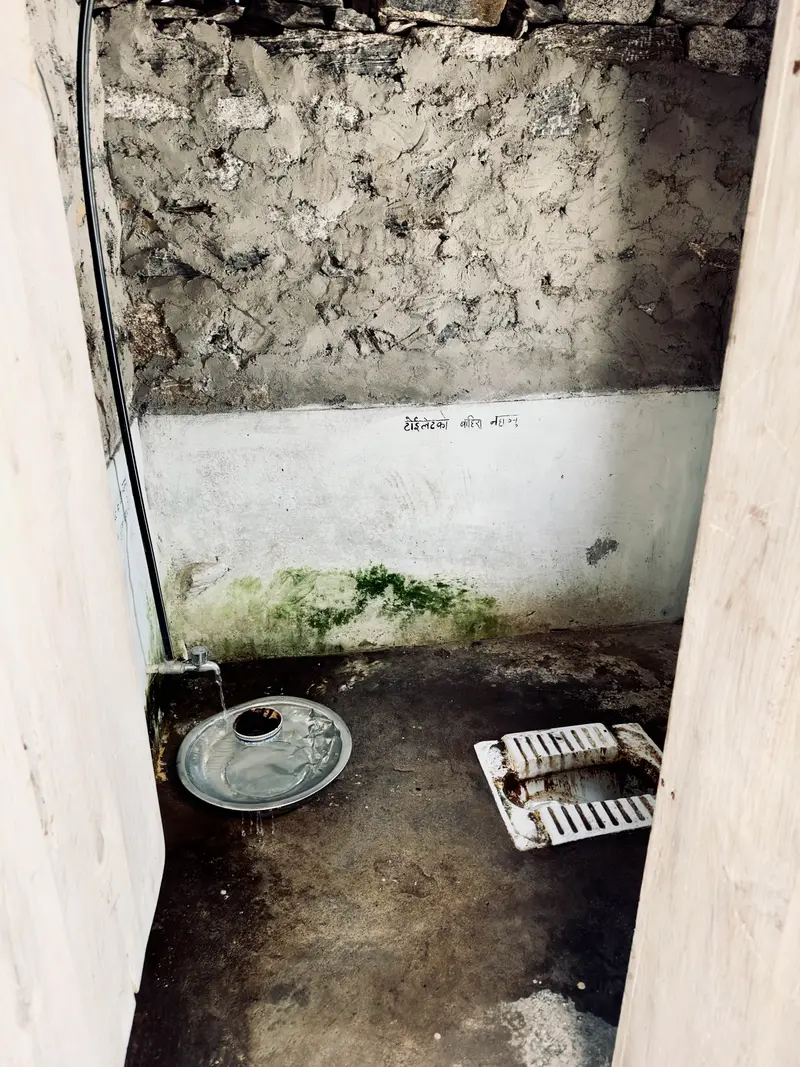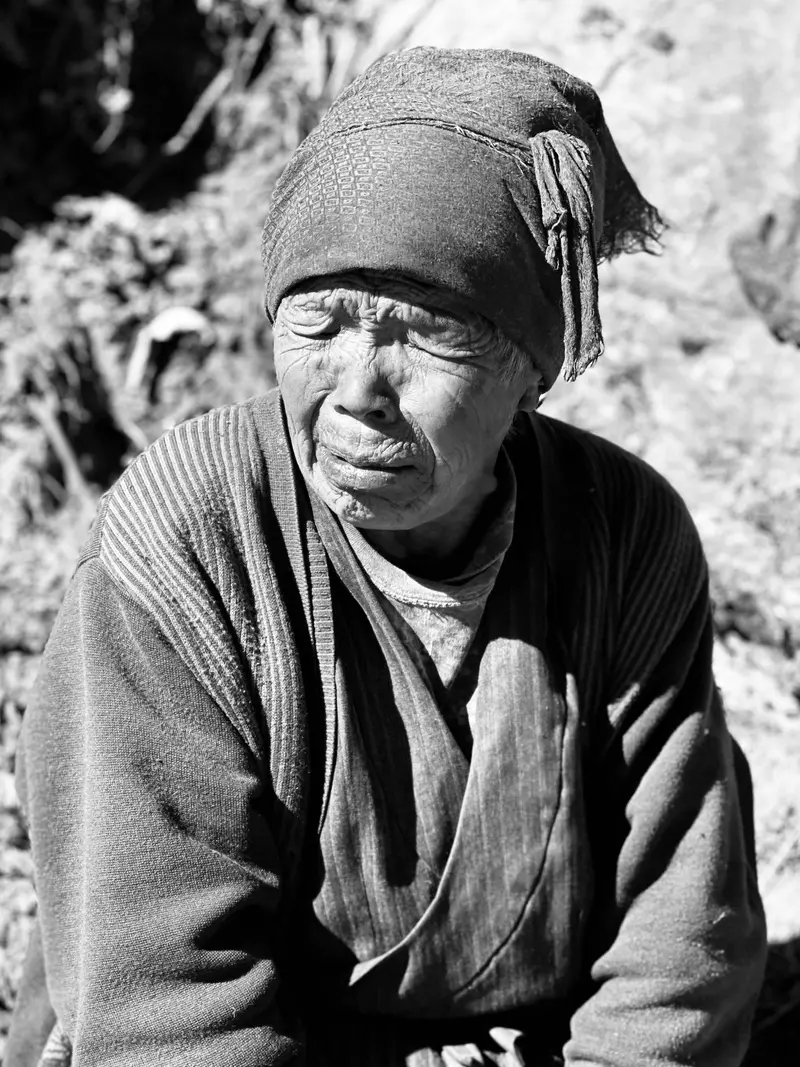Trekking to Everest Base Camp: A Review, I Guess?
Everest Region, Nepal
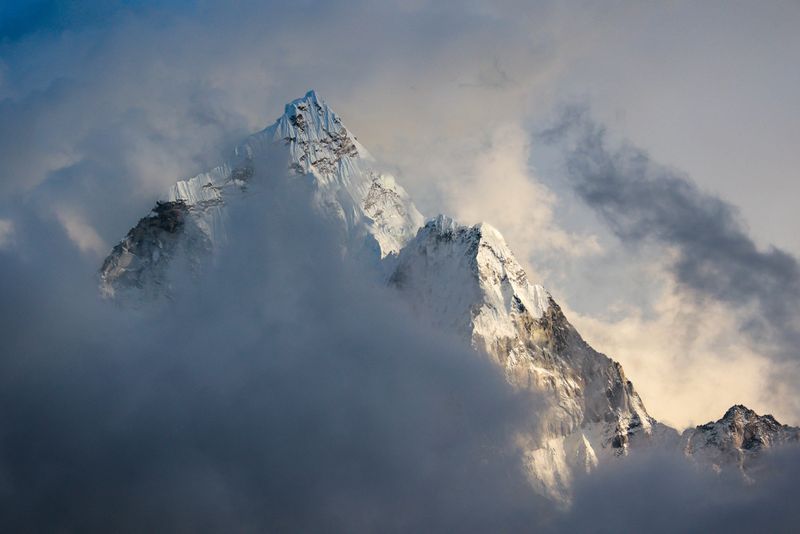
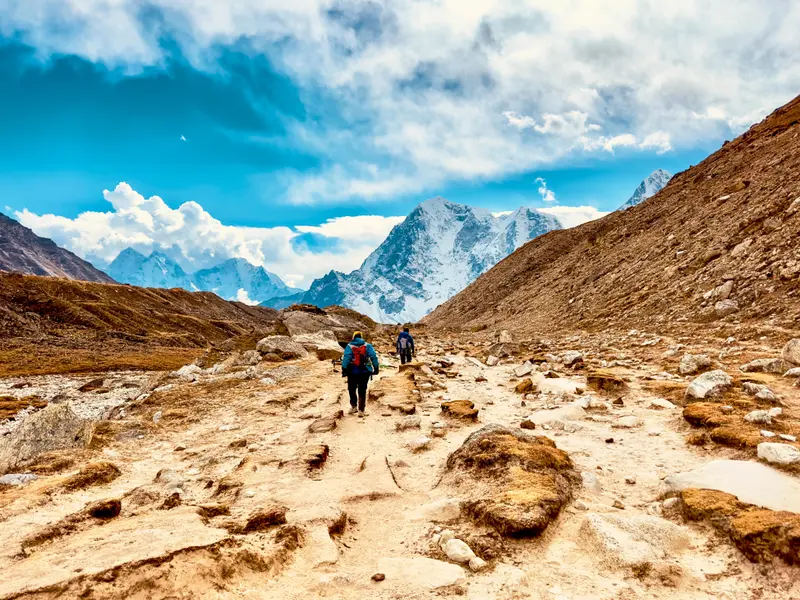
**************************************
FULL DISCLOSURE:
If given the chance, I would go back to Nepal and do this entire two-week trek through the Himalayas all over again in a heartbeat! Even if not one thing changed, I would still jump at the chance to do it all again.
I think a lot of people downplay the difficulty of this trek not because misery loves company or (solely) because they want to come across as a badass (although that's probably part of it), but mostly because distance makes the heart grow fonder, and anything you've lived through and survived seems much more manageable in hindsight.
This is why most of what I've decided to include here was composed not after the fact, but written on a daily basis, in my diary, while I was actually on the trek. I feel it's more honest this way.
Now.
Having said that, get ready, because I am about to whine and moan and bitch my little heart out about how difficult it was! Pull out the violins, folks, because this is about to get dramatic!
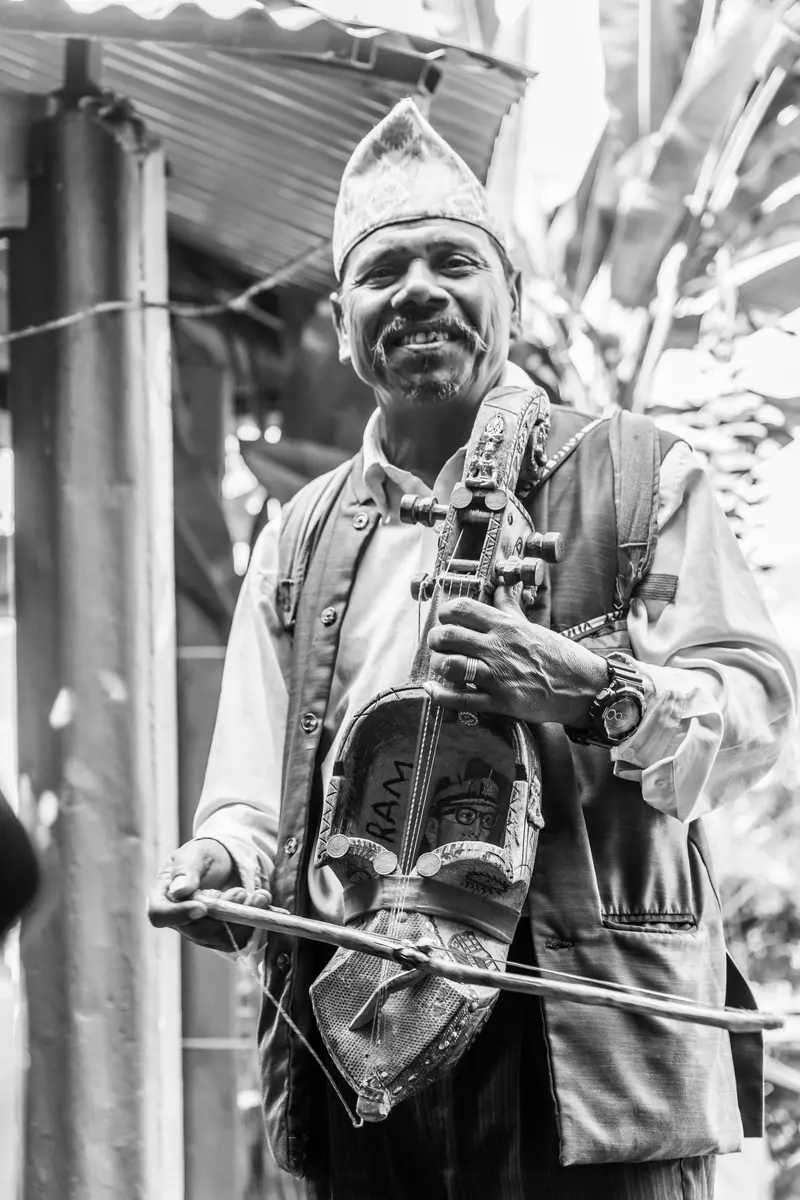
**************************************
TREKKING THE EBC CIRCUIT, A PREFACE
If I came from a parallel universe, and had never been to a restaurant before, how helpful would my review of that restaurant really be? With nothing to compare it to, my review would probably read as an absurdist commentary on the concept of “Restaurants” themselves, as I devolved into the strangeness of strangers cooking for me and bringing me food, but with no insight as to whether or not they were doing it well.
That’s how I feel anytime I sit down to write a review of an adventure tour company: that I am unqualified to write an objective, comparative review, especially when the tour company has taken me somewhere I’ve never been before, and will probably never go again.
My recent journey of trekking the EBC circuit in Nepal is no different, as I only have the one, singular experience to draw from. How would I know if the tour company I chose performed better, worse, or on par with others of a similar ilk? I suppose one indication would be if I looked around the tea houses and all the other trekkers were being served filet mignon while I slurped away at my unseasoned rice broth, but trust me, that was not the case. Everyone on that mountain was in for the same surprises. Furthermore, how can I extricate my thoughts and feelings about Nepal, trekking, and tea houses in general, from those about my tour company, guides, and porters, when they are all inextricably tied up in my one, singular experience?
Well, with that overlong disclaimer as a preface, the answer is, I’m going to try my best!
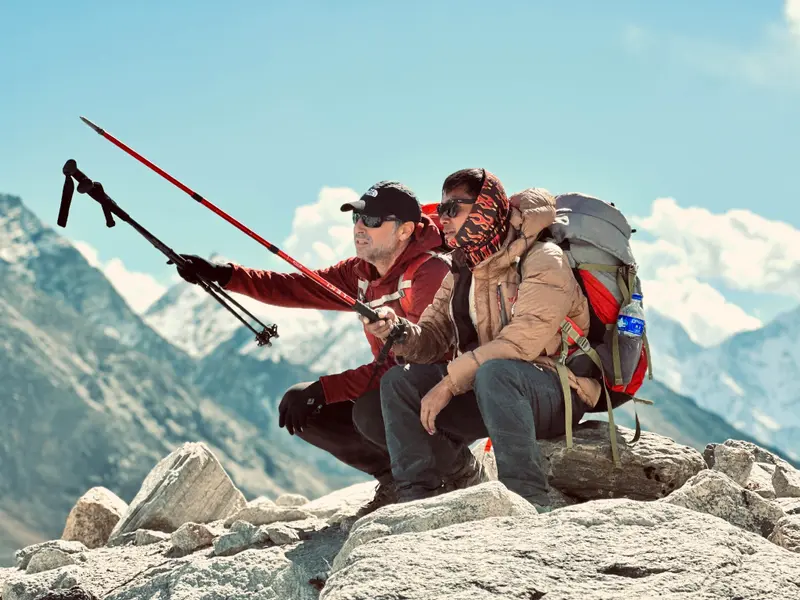
First things first, I feel I should mention that one half of MANIKANG TREKS AND ADVENTURES is Tenzing, and he is my neighbor here in Dallas, Texas. So while you might not be able to walk across the street to discuss the finer points of the trip over a cup of masala tea, or borrow his personal rain jacket before your trip at the last minute, I suspect you will still probably get some very personalized and attentive service from him during your pre-trip planning/packing phase.
Tenzing’s knowledge and enthusiasm about trekking, and his passion for his native home, are so genuine and infectious, that I promise you will leave America feeling confident and well-equipped for the journey ahead. However, I do have a few general tips and tidbits that I feel are rarely covered by most travel writers.
THE TIHAR FESTIVAL
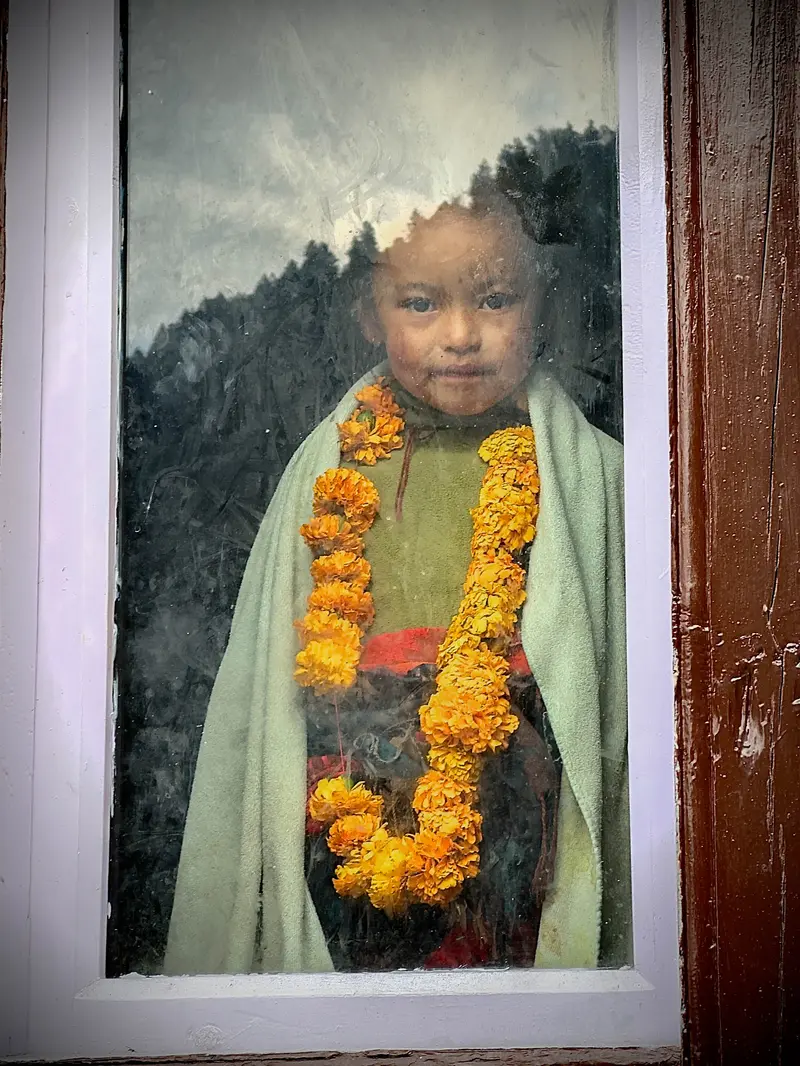
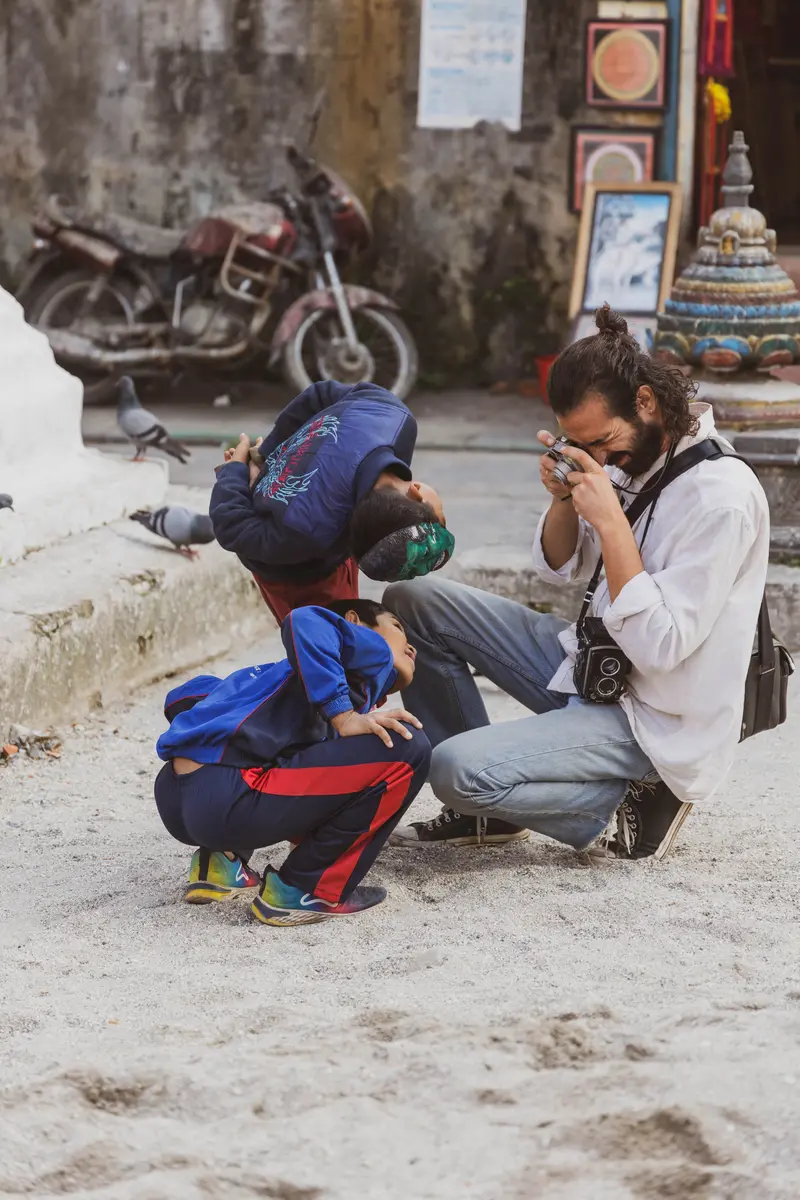
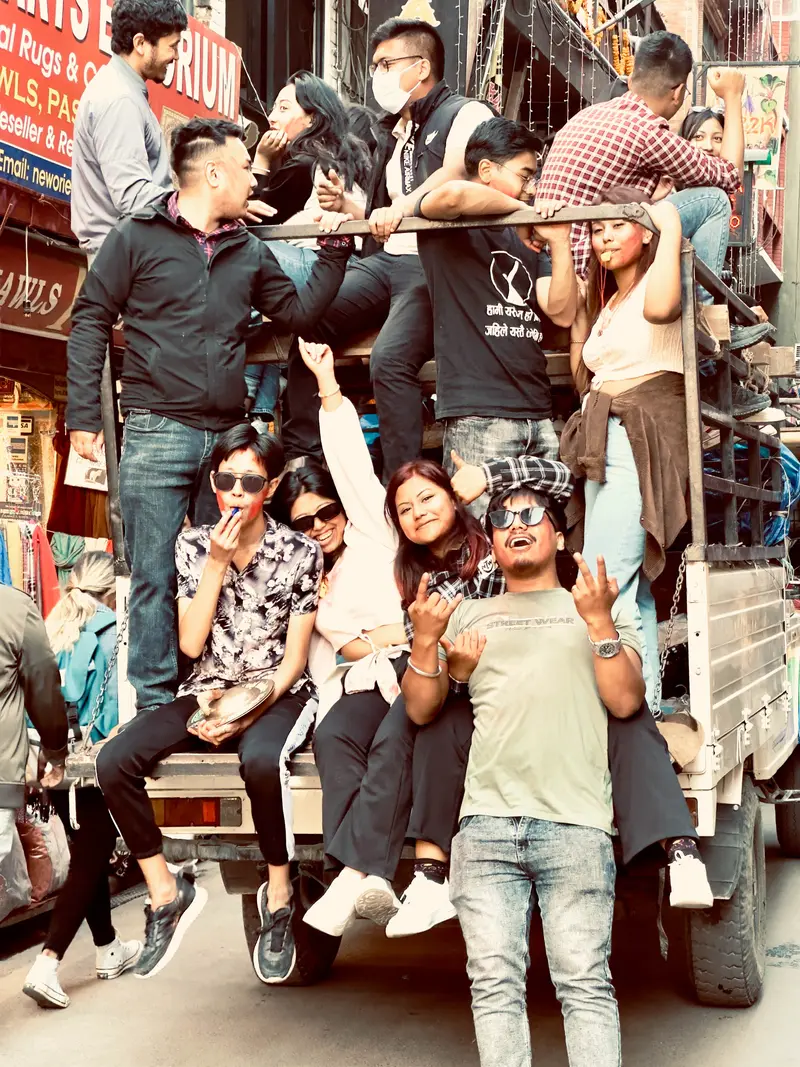
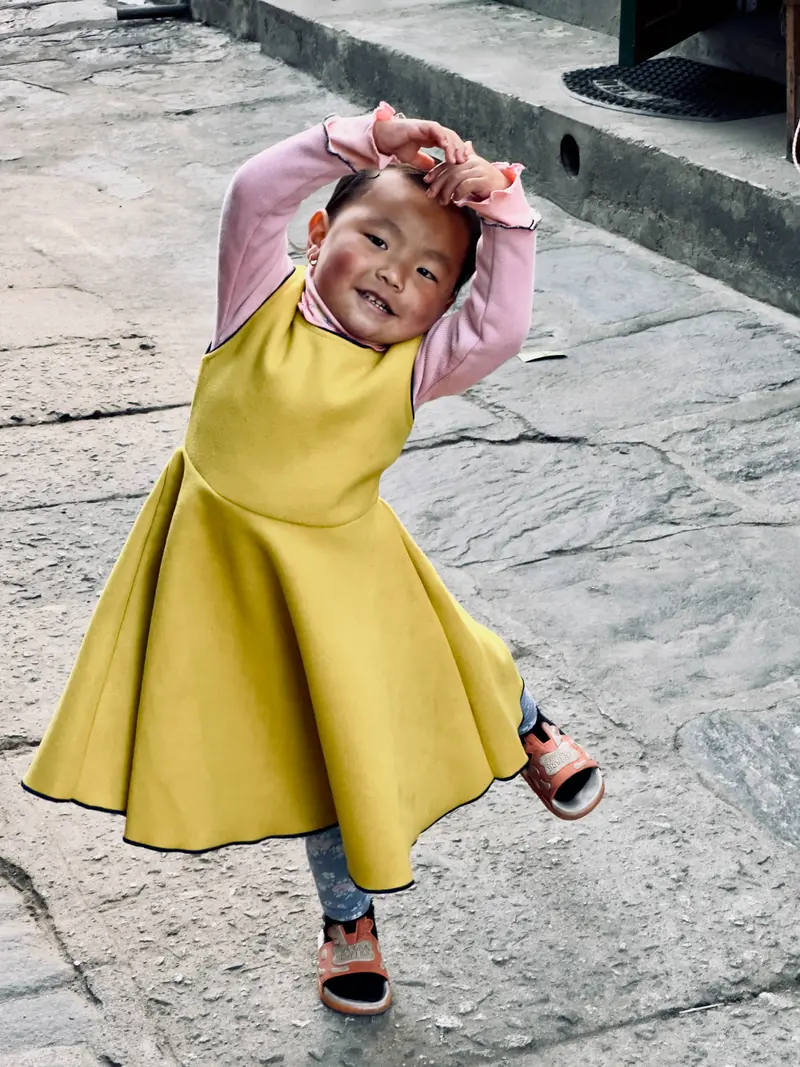
We planned our trek so that our arrival in Nepal could coincide with their TIHAR FESTIVAL, mainly because I thought it would make for good photography. And don’t get me wrong, it did! But this also led to our most egregious misstep, and the one thing I would definitely do differently if I could do it all over again: waiting until after Tihar pushed our trek into November, making the nights miserably, unbearably, cold. I cannot stress this enough, please plan to start your trek earlier in the season. I truly believe that changing just this one, singular detail would have made all the difference for us.
Having said that, our Manikang guides and porters were all pleasant and accommodating, especially when we both got sick, and I couldn’t imagine completing this harrowing adventure without them. We’d probably both be dead.
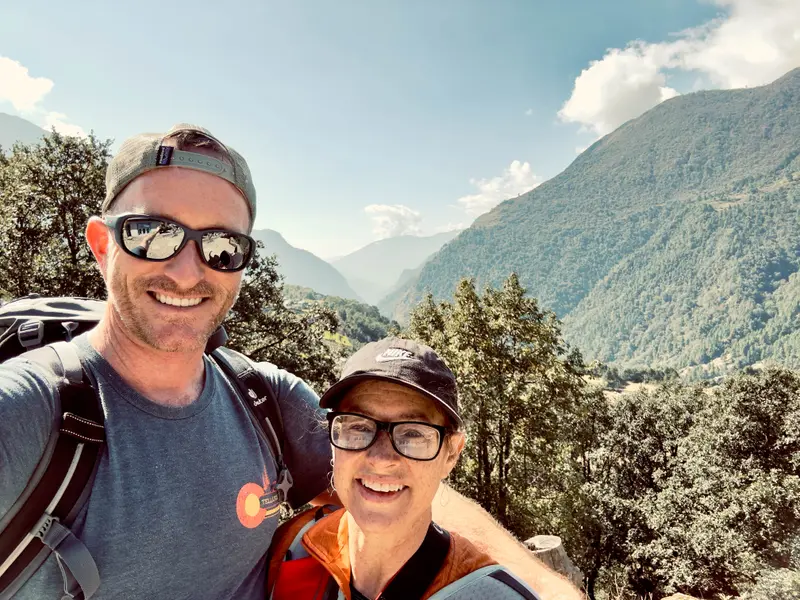
TRAINING FOR TREKKING
And just a fair warning, you will—by the way— most likely get sick at some point. Just how sick most likely depends on your level of fitness and preparation, the quality of your accommodations, and the ability of your guide to prevent this from happening.
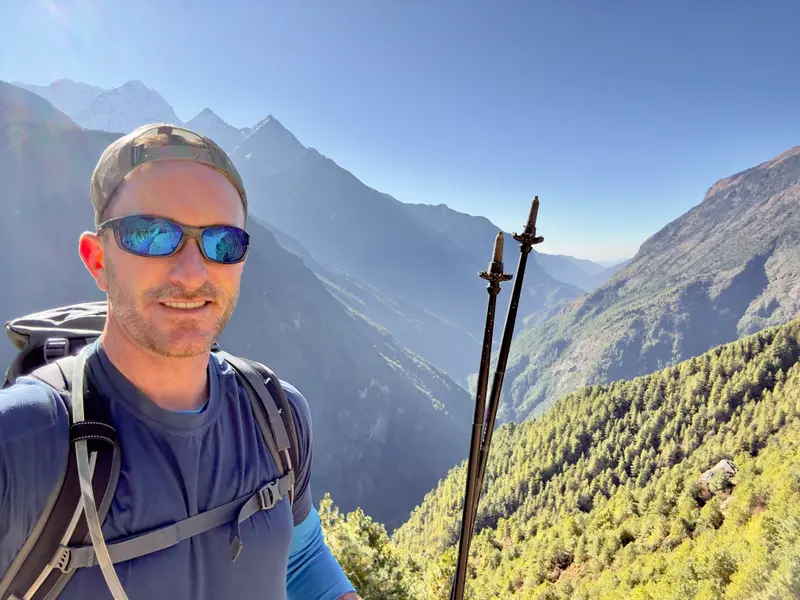
I trained and prepared for this trek for about a year prior, and was in exceedingly good shape, but there are some things that you simply cannot prepare for. I naively imagined that Himalayan air would be on par with the clean, crisp, invigorating air I’d experienced when hiking high up in the Alps. This is far from the case.
Also, prior to your fourteen day trek, it's kind of hard to recreate at home what it will feel like to have a bloated, constantly-expanding stomach for two weeks. Or, if you are afraid of heights, how do you practice crossing wobbly suspension bridges?

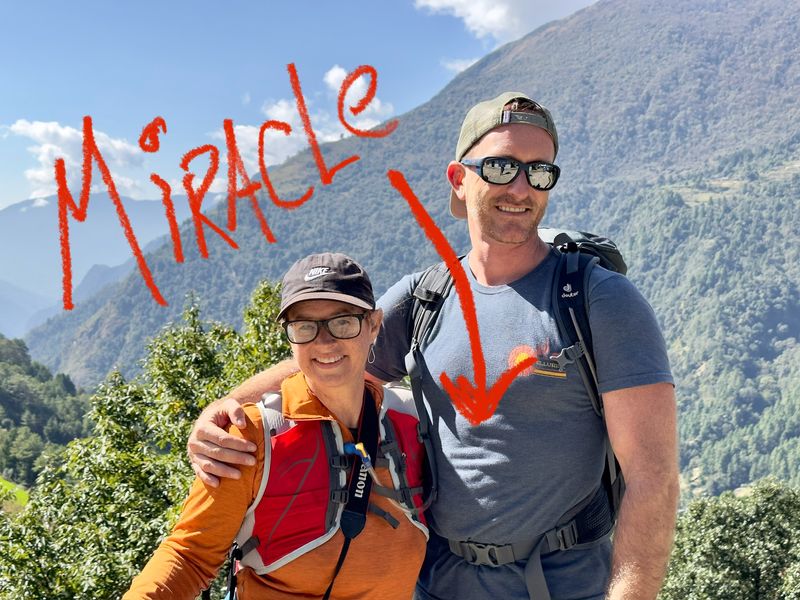
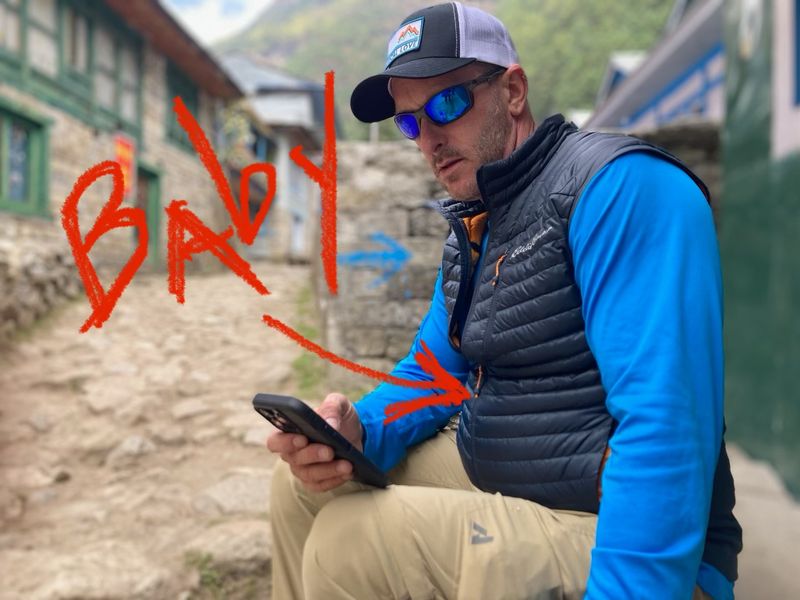
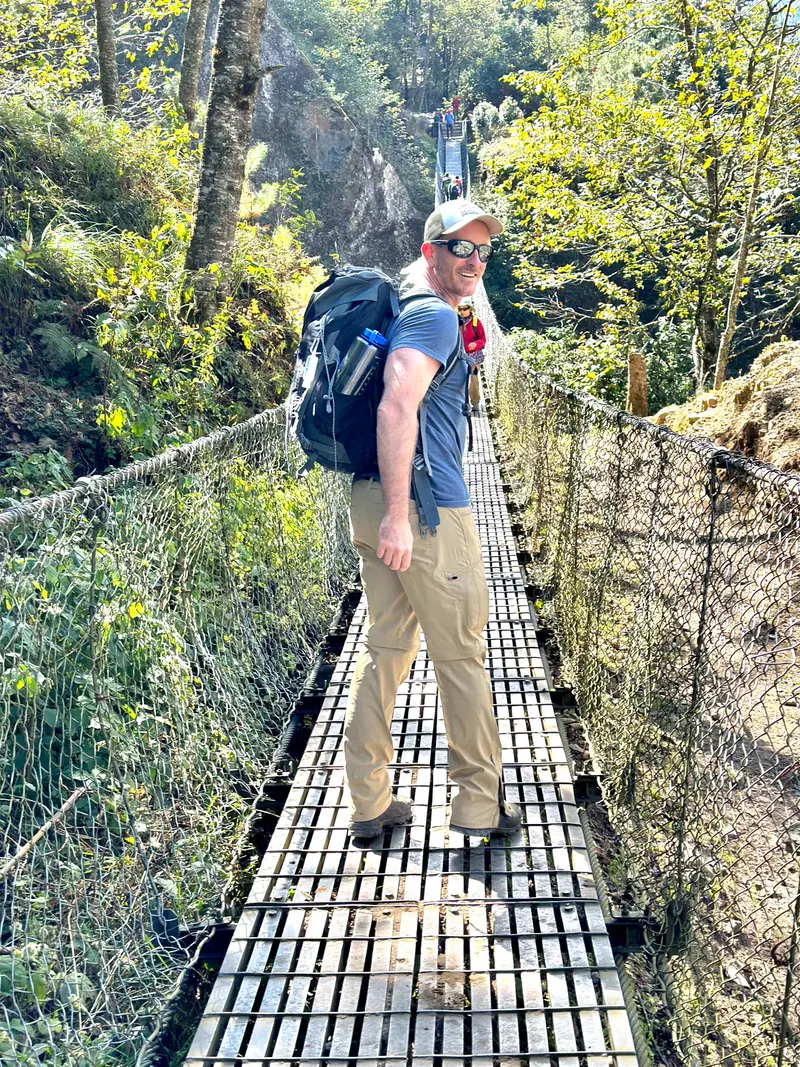
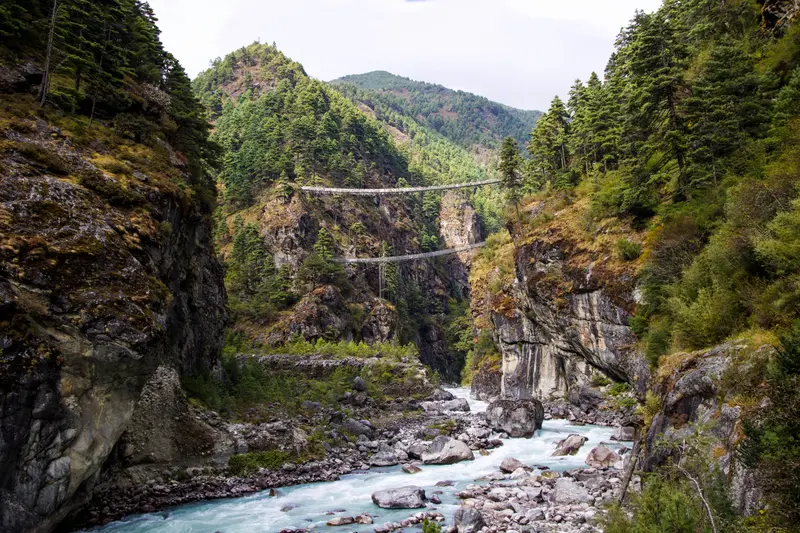
Luckily, I am not especially afraid of heights, because if I were, I have no idea how I would have gone about overcoming that fear or practicing crossing suspension bridges here in Dallas, Texas. We just don't have anything remotely similar to that here, and chances are, wherever you live, you don't either. However, Dallas doesn't have any high altitude hiking to offer either, but I did find a way to prepare on that front.
About a year prior to my Everest trek, I started going to Colorado and hiking 14ers with a group of friends. 14ers are mountain peaks over 14,000 feet, and while far from the much higher elevations we encountered on the EBC, this training at least gave me an idea of what to expect. It helped me learn whether Diamox was right for me, what gear and clothing to bring (and what to leave behind), which hiking shoes I preferred, how much weight I could realistically carry for long periods of time, and about a million other helpful revelations.
I cannot stress enough how essential these 14ers were to my preparation and training for the Himalayas, and you can read more about Colorado "peak bagging" HERE.
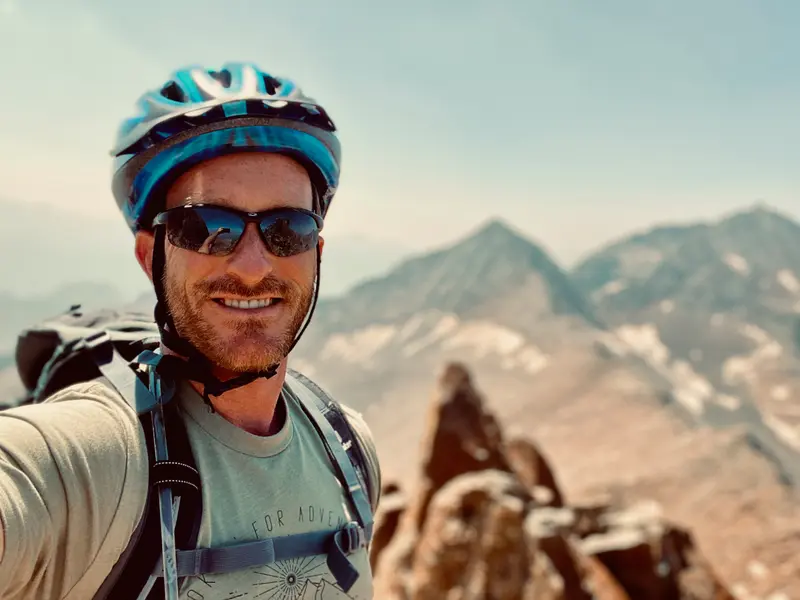
THE KHUMBU COUGH
Nepal consistently ranks amongst the most polluted countries in the entire world and has the 6th worst air quality on the planet (at the time of this writing). Without any proper system in place for waste management, it appeared to me that anything the people of Nepal no longer wanted to look at, they simply set on fire and BURNED; even things like plastic and rubber, regardless of how toxic and noxious the fumes, they just burned it on site, filling the air with smoke. The constant dust on the trail, along with all the smog and smoke that gets trapped in the mountains from burning all that trash (and also from cooking/heating fires and the constant burning of yak dung), will inevitably get in your lungs and cause a mild to severe respiratory infection. This is referred to as the “KHUMBU COUGH.” Look it up.
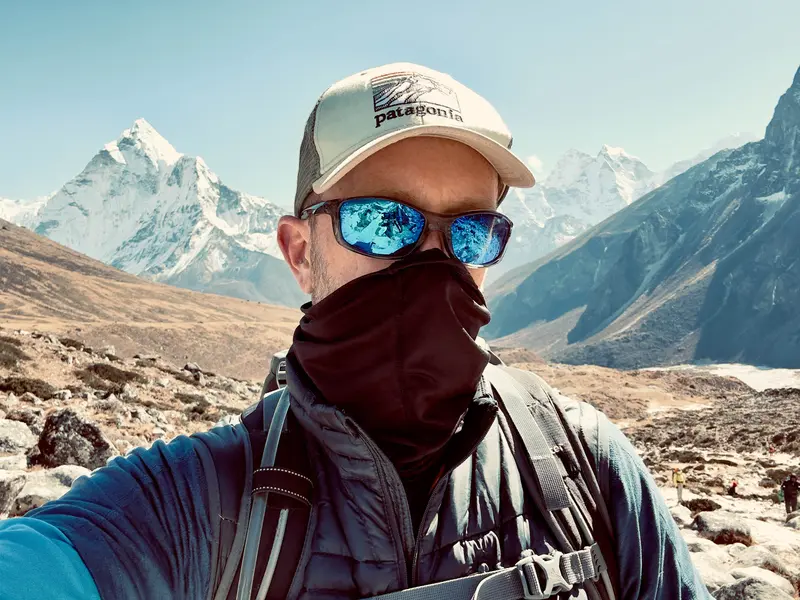
People you encounter on the trail are not wrapping their noses and mouths because of any lingering concerns about Covid, they are doing so because the air in this region is literally poisonous. The smoky air will also invariably sting your eyes and throat, and for most of the trek, it probably looked as if I was crying.
And maybe I was a little!
Combine the terrible air quality with good old-fashioned exhaustion, and the excruciating headaches and sickness you will likely get from the high altitude (even on Diamox!), and the sub-freezing temperatures in which you will be sleeping, and yeah: this trek definitely warranted a little crying.
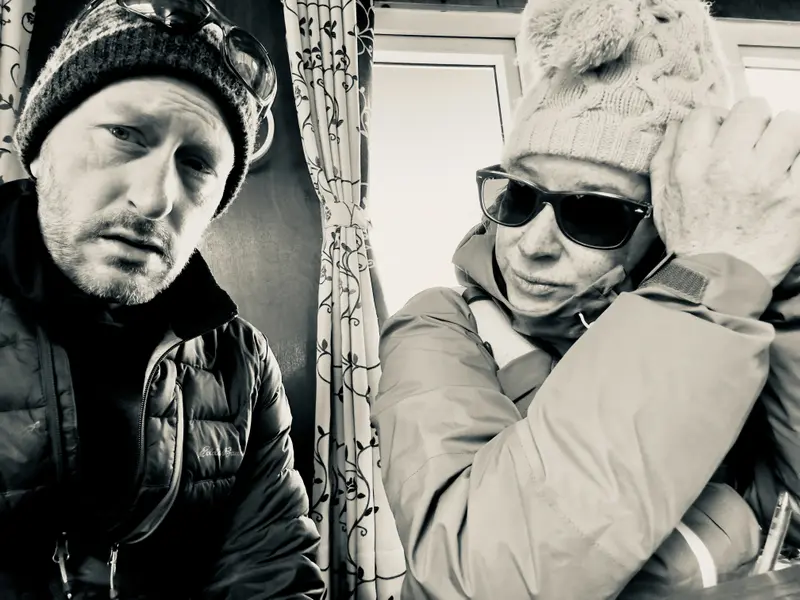
Be careful though, your tears might freeze your eyelids shut, as even the warmest sleeping bag will not keep you from shivering in your room all night long. The walls of our “tea house” sleeping quarters were often only a single sheet of plywood, and every night you will be able to see your own breath, as you try to fall asleep—praying that you don’t have to get up and make your way to the toilet, which is often little more than a hole in the ground. Also— that hole in the ground is usually located quite a ways away from your room, and might require an even colder journey in the pitch-black darkness.
Fun times— who’s ready to hike for ten hours again tomorrow?
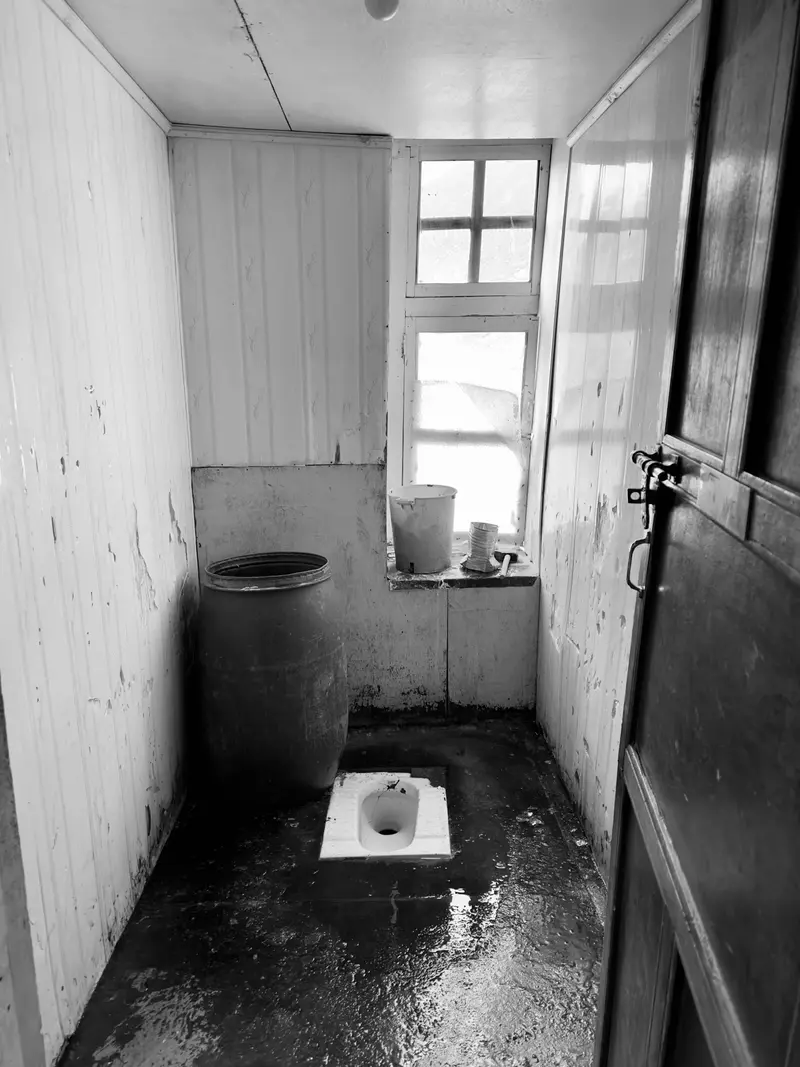
THE "TEA HOUSES"
In my opinion, one of the most insidious deceptions was to quaintly dub these lodgings “tea houses.” I guess I had pictured something primitive but ultimately delightful, because saying “tea house” makes them sound charming and adorable, right? Wrong. Please know before you go that they are most often not, and abandon any notion of charm or comfort now.
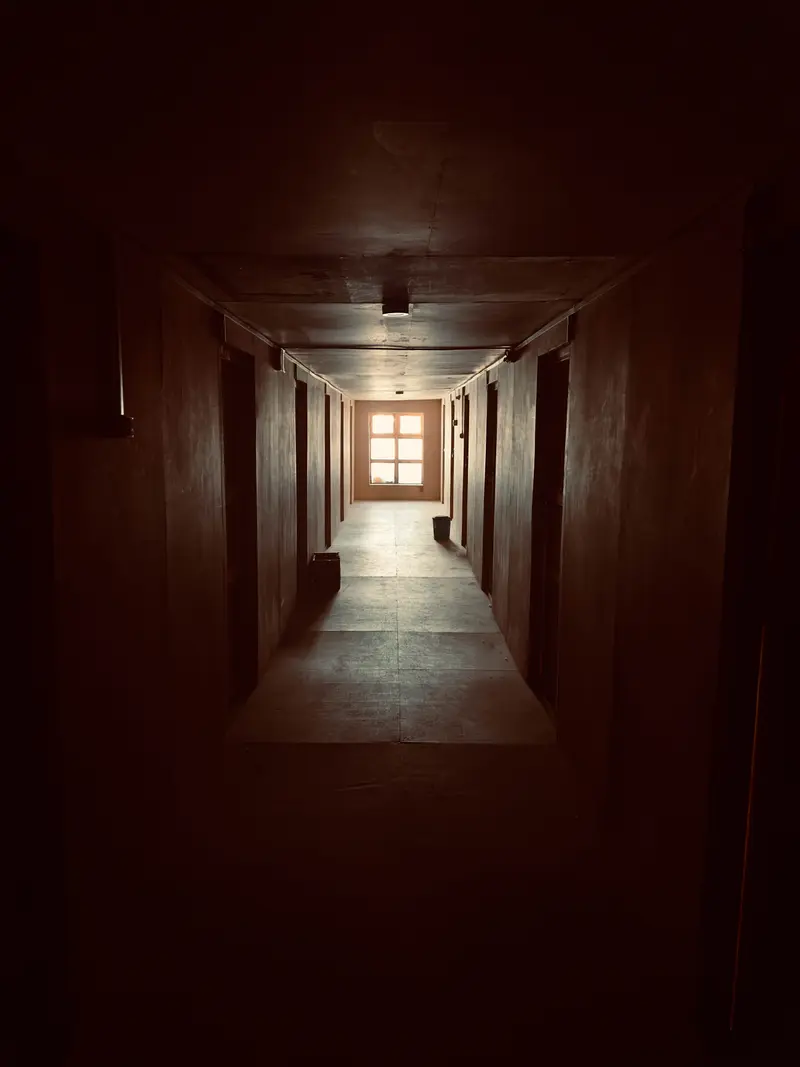
The lodgings and sleeping conditions have no equivalent here in America with which to even make a comparison.
And when you are sick as a dog, the lack of potable (or even running) water, or a toilet that you can sit on, becomes devastating. How do you train for this?
There is sometimes a communal sink, but you probably don’t want to even touch the freezing water that comes out of it (uh-oh, now that part of your body is irrevocably cold!), and you definitely don’t want to drink it. That goes without saying.
NOVEMBER = NOT A GREAT IDEA
Combining the challenges of high altitude trekking with the miseries of an underdeveloped country is definitely not for everyone, but we felt that, again, one easy way to turn this trek from miserable to manageable would have been to go earlier in the season. That way, not only would a lot of the unpleasantness associated with our freezing-cold sleeping conditions be assuaged, but we figure it might also decrease the need for the locals to burn quite as many heating fires, and therefore reduce the overall amount of nauseating smoke in the air.
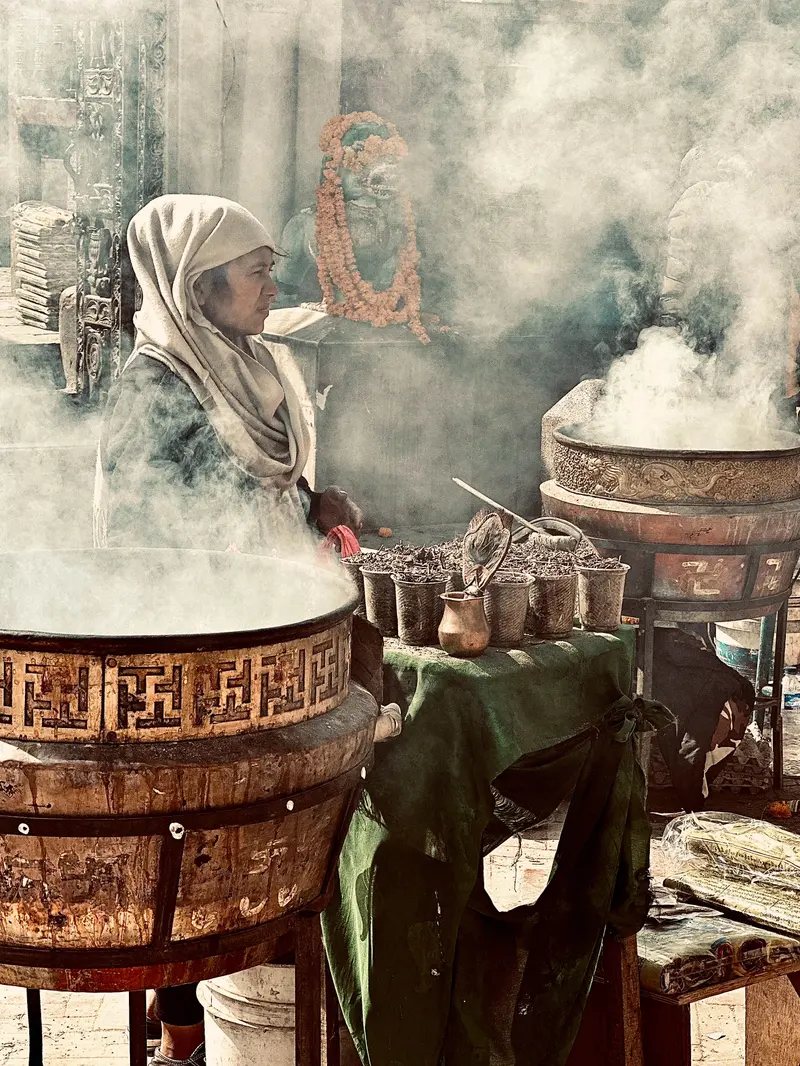
We had a lot of time to think about this... while freezing and coughing and vomiting and crying ourselves to sleep.
In my opinion, the fleeting moments of joy or the occasional breathtaking view is disproportionate to the amount of difficulty and misery that is involved to achieve it. Luckily, neither of us got serious diarrhea on this trip— however, my trekking partner’s situation did eventually devolve into frequent vomiting along the trail. Our Manikang guide was very understanding and accommodating, and adjusted our pace and itinerary accordingly. Luckily, because of my throbbing head and inability to breathe, I was already hiking so slowly that he didn’t have to adjust for her vomiting by much, I'm afraid. Any slower and I might have been mistaken for dead.
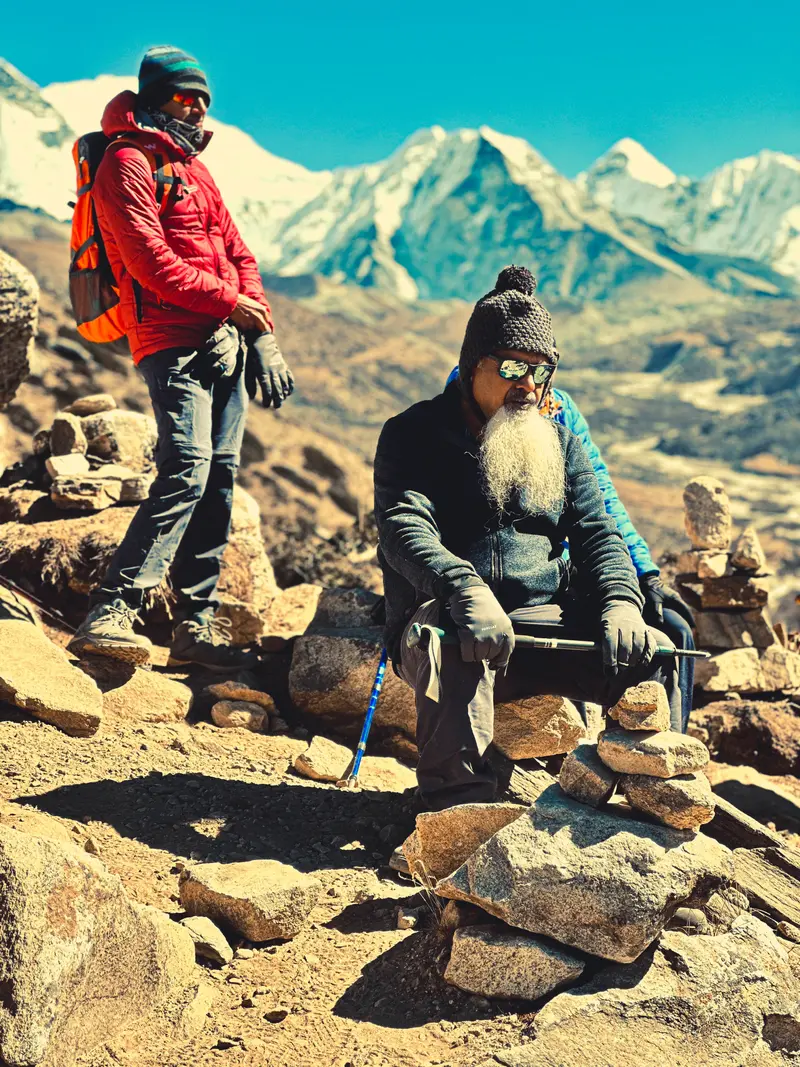
YOUR PORTER BELLOWS
Also, in the interest of full transparency, one of the reasons you will constantly be smelling and inhaling smoke, is because all the porters smoke cigarettes. And I’m talking all of them, and I’m talking chain smoking. Yes, the guys that are running up the mountain with fifty to a hundred pounds of your stuff on their backs stop and take a multi-cigarette smoke break every chance they get. I don’t how they do it, but they do. Occasionally, I would try to smoke with them... and this also falls into the category of BAD IDEA.
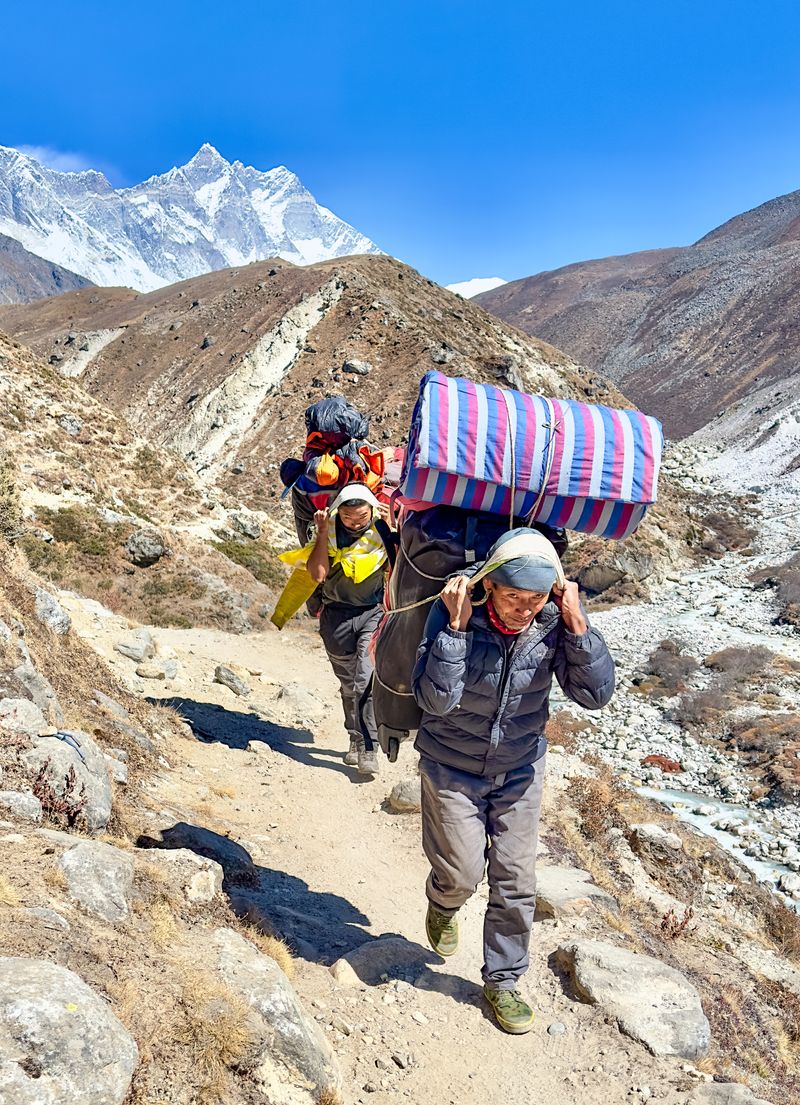
DO IT, THEN FLY AWAY!
If you are set on doing the EBC trek, then I do have some advice that I feel could make it more tolerable. The first and foremost of which is of course, not to wait until November, and to go earlier in the season when it is warmer.
Secondly, take a helicopter back to Katmandu after you reach base camp and accomplished what you came there to do. No joke.
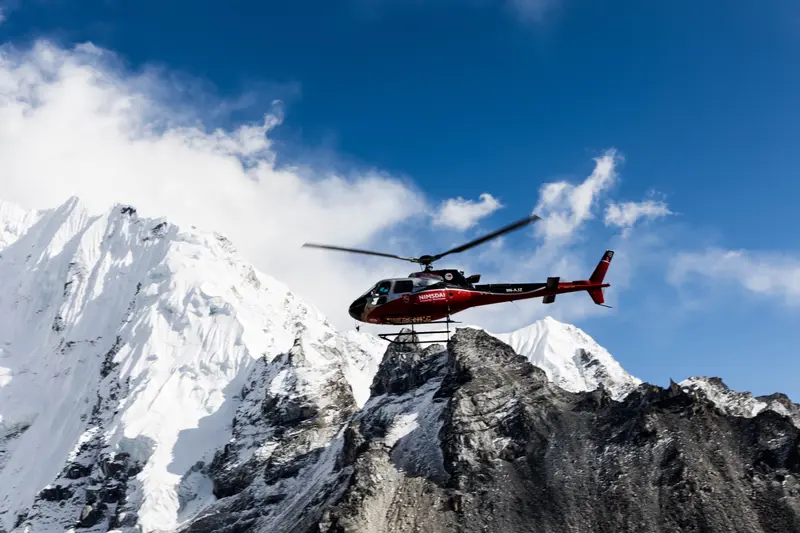
The dread of having to do the entire nightmare trek in reverse will hang over your head for the entire trip, and there is absolutely nothing to be gained from hiking back. Plus, with the helicopter return, the climax of your trip— reaching base camp— can fall properly at the end of your trek, rather than awkwardly in the middle.
Also, I learned something about myself: 14 days of trekking is personally too much trekking for me. Even with all the myriad hardships I’ve enumerated that kept us “entertained,” the days became repetitive and—dare I say—boring. As a photographer, there is always going to be something new to photograph, but doing the whole trek in reverse and encountering the same things again (but this time with less energy, health, and enthusiasm) was redundant and unnecessary.
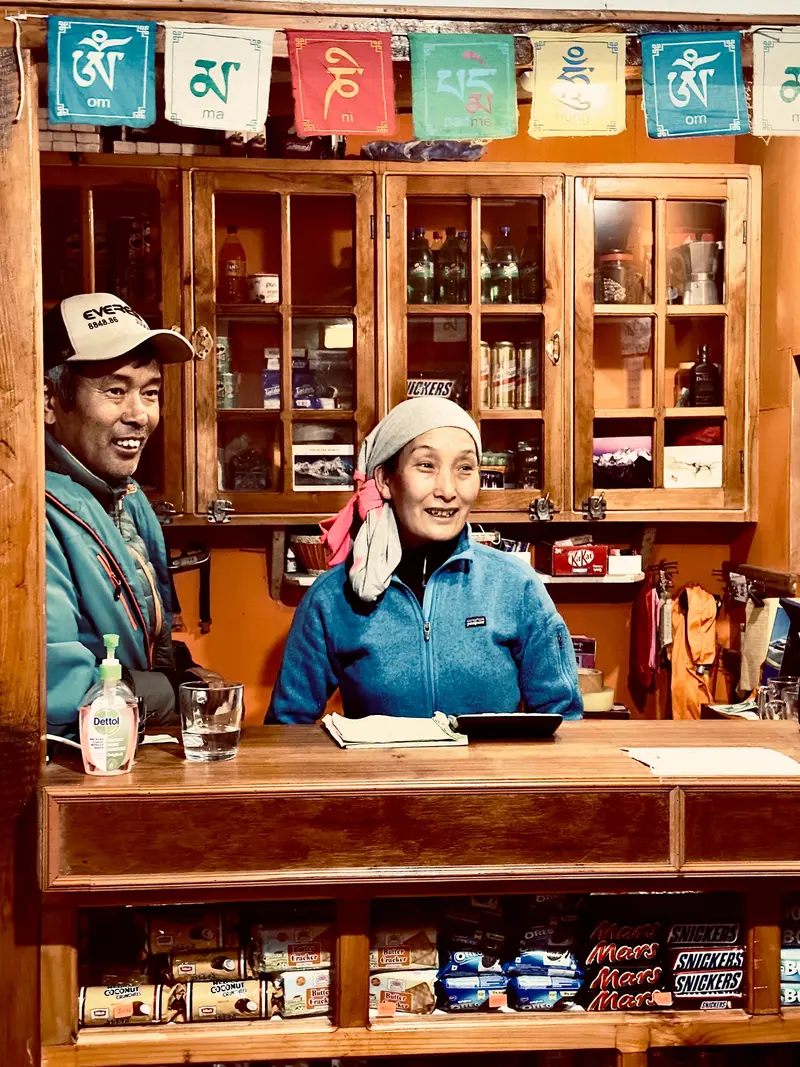
THE COUGHING ROOM
At the “tea houses” where you will be sleeping, for any semblance of warmth or WiFi, you must gather in the "Coughing Room." This is what I called the communal, crowded room that has the only source of heat, and where everyone comes to commiserate and cough with one another. So your choice becomes— do you go and cough and wheeze and be dizzy and miserable near the communal fire, but also around dozens of other people, so they can all watch you retch— or do you go be sick in private, back in your room, where it is well below freezing?
I suppose misery does love company, and these Coughing Rooms reminded me of what it would be like if REI had an infirmary. My advice is to bring more medication with you than what you imagine you could possibly need.
ALSO, BRING PROTEIN BARS!
So you’re sick and hungry and you want to eat healthy but you can’t. Why? Check out the menu. It shouldn’t be hard to get ahold of one online before you depart, since due to some agreement with the communist Chinese government, every single tea house is required to serve pretty much the exact same things. And these things are what you will be choosing from for two weeks—morning, noon, and night.
Once you take any ill-advised meat out of the equation, your only protein option is egg, accompanied a steady diet of rice, noodles, and potatoes. My advice here is bring the maximum number of protein bars that your luggage weight limit will allow. I went through 3-4 bars daily.
(But then again, as I’ve established, it’s possible I was eating for two…)
BASE CAMP VS KALA PATHAR
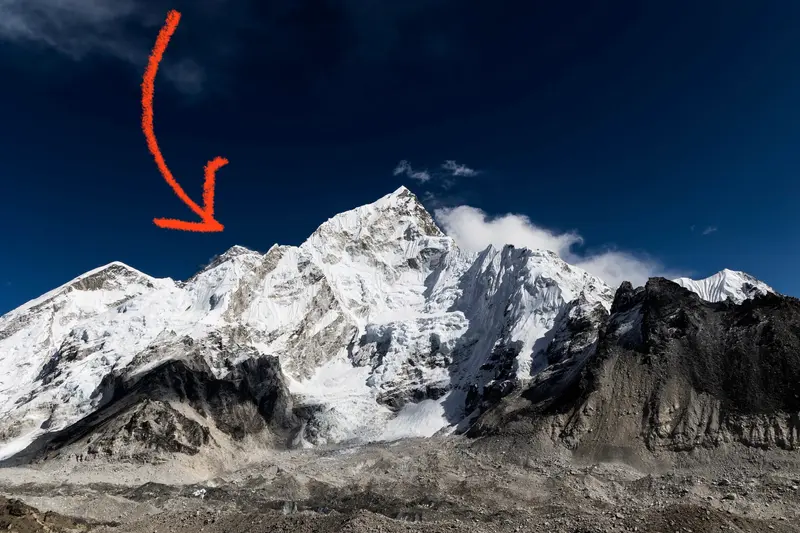
Lastly, unless what you need to prove to yourself involves touching a sign that says Base Camp, with little else there to see or photograph, if it comes down to only doing one or the other, go up Kala Pathar and take in the actual view of Everest. Yes, it is a little bit further and higher in elevation, but Base Camp itself is underwhelming. (Of course, part of that could have been because it was mid-November and most campers had already cleared out; also, full disclosure, I opted for the Kala Pathar route and did not accompany Kimby to Base Camp).
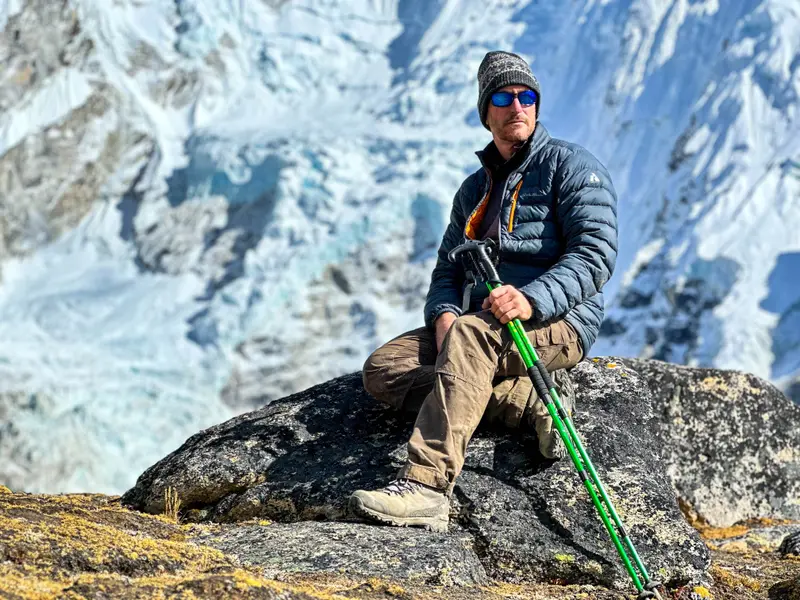
I'D DO IT AGAIN, BUT...
You know, I thought this trip was going to make me feel so fit and so strong, but if anything, it had the exact opposite effect. I feel like it has taken about five years off my life.
(Kinda like how driving your car long distances on rocky terrain each day wouldn’t leave you with a better-functioning, better-trained vehicle… )
Have you ever had a game you really liked to play, maybe on your phone, but after playing it for a while, and advancing and advancing, to the next level and the next, at one point you look up, and realize it has stopped being fun anymore because it is simply too difficult? And in order to move forward, now they want you to pay a price?
That’s how this EBC trek felt.
Already we were hiking uphill for 10+ hours each day…
But wait!
The altitude is likely to give you headaches, exhaustion, or make you sick.
And don’t drink the water, it’s poison, it will make you sick.
Also, don’t breathe the air, it’s poisoned with pollutants, it will make you sick.
Surprise, it’s below freezing... you’re sick.
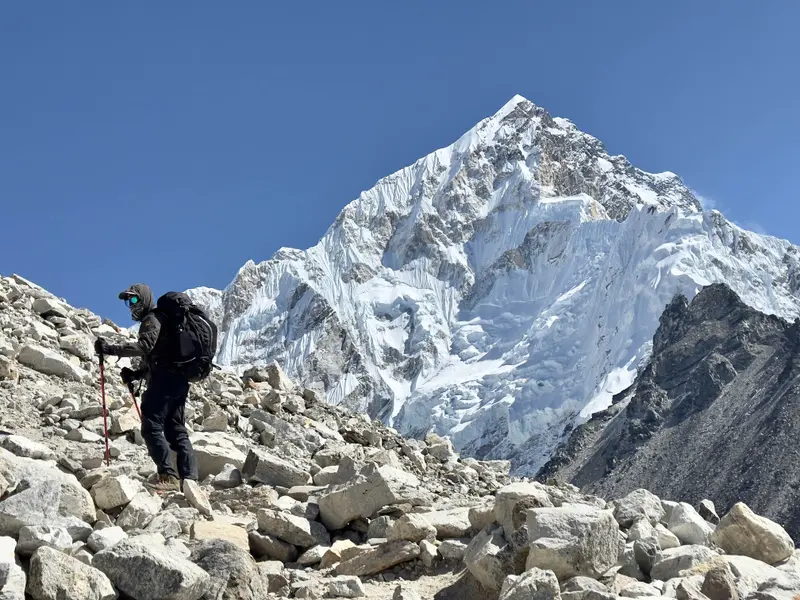
And there’s no toilet or running water and the food blows and my friend is vomiting. EBC became too difficult and stopped being fun, and I wanted to stop playing.
However, any time I started feeling sorry for myself and having a little pity party, I would stop and remember that my trekking partner, Kimby, was having to endure all the same hardships as I was, but unlike me, she had just given birth to baby girl less than four months prior!
I probably should have mentioned this before now, but yes, it's true, and to keep her breast milk flowing, Kimby was also having to express milk throughout our adventure. She had to stop and pump milk almost hourly, and she did it at high altitudes and in all these gross not-really-bathrooms. (Or behind a tree, a rock, a shack, etc....)
Yeah.
This gets its OWN SEPARATE STORY!
Everything about this journey reminded me of war, like Kimby and I had been deployed. At one point, even the food turned more to what I would call “provisions.” For example, often we were given a flavorless porridge gruel for breakfast, and for many other meals, just a piece of dry toast and a hot garlic soup broth featuring… nothing. Just garlic broth.
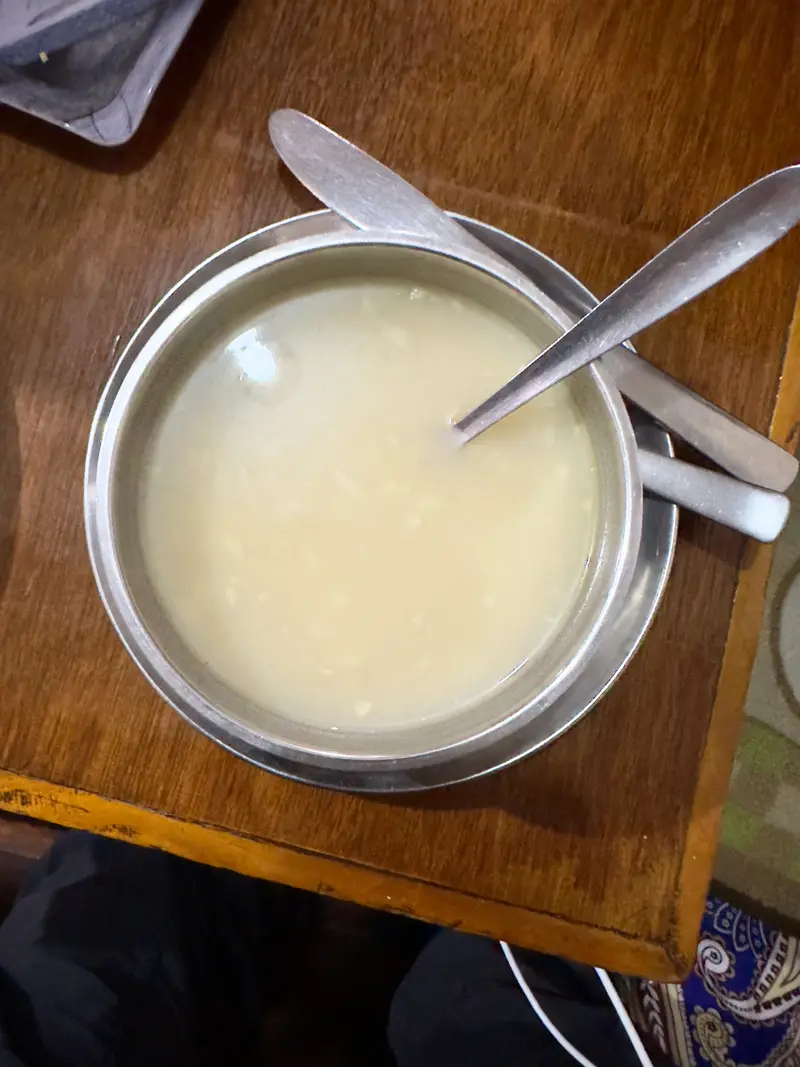
Why I thought I needed to combine high altitude hiking with the lowest of human living conditions is beyond me, but I think I may have gotten whatever “that” is out of my system and will now go photograph tropical beaches for the next twenty years.
Haha, I'm kidding! Kind of.
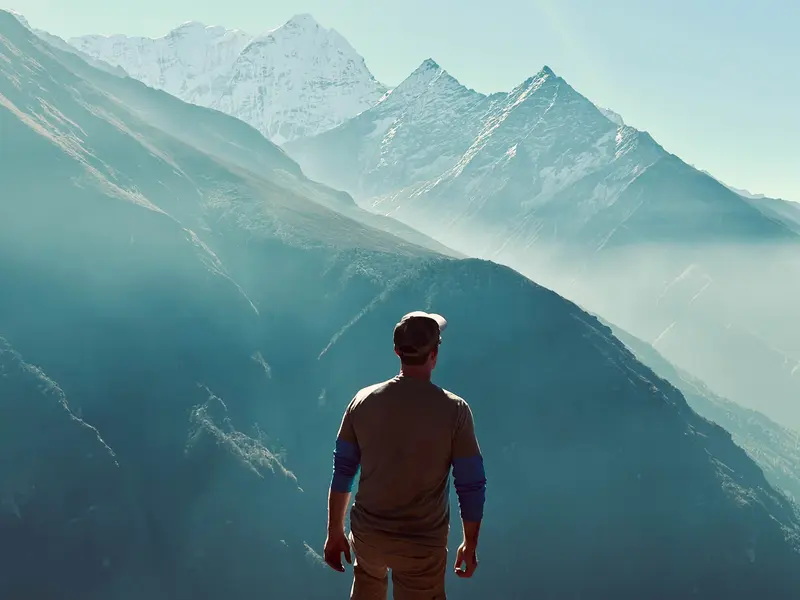
CHOOSE A GOOD ADVENTURE COMPANY AND GUIDE
Luckily, I have survived to live another day, and I believe that was due in large part to MANIKANG TREKS AND ADVENTURES. Having only done this trek once, and with them as my adventure coordinators, I cannot speak to what it would be like to do the EBC with anyone else, but I can say that their experience, knowledge, and proficiency were exceedingly evident. From being extremely attentive in the pre-trip phase (when you have about a million daily questions about what to pack and how to prepare for your upcoming trek), to the actual trek itself, where we were provided a guide and porters who were skilled, pleasant, and very adaptable to every new and challenging situation we encountered, Manikang made us feel very supported and cared for.
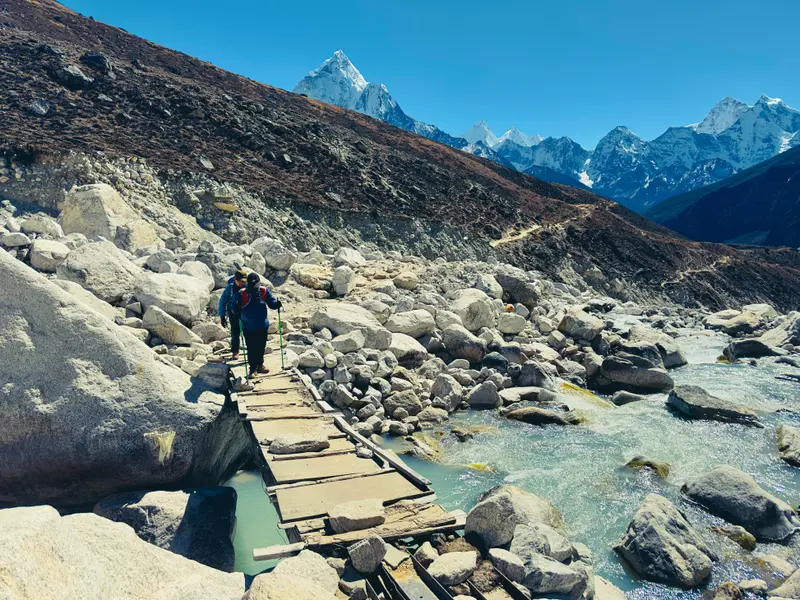
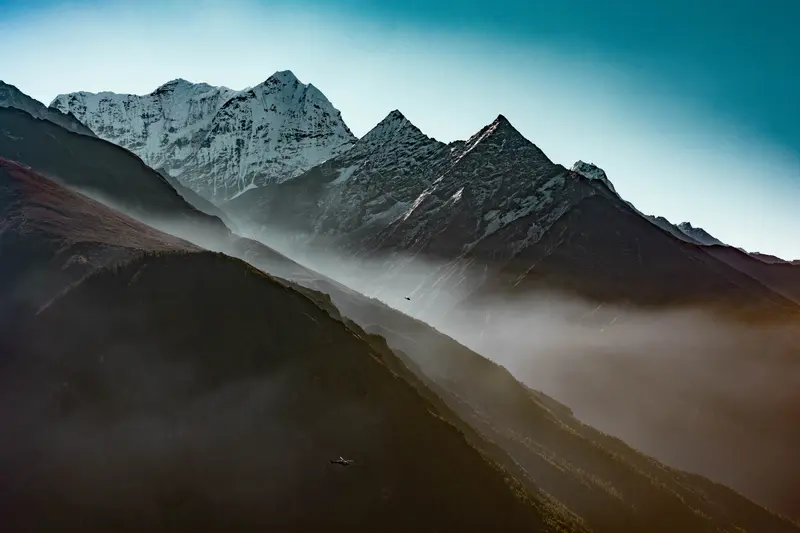
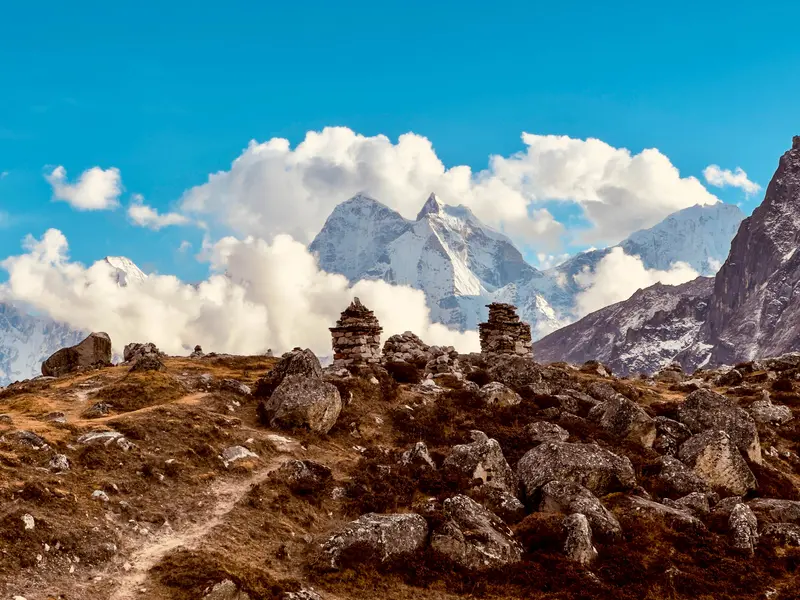
And unless you can find a trekking company who can control the weather, cure altitude exhaustion, install potable water in Nepal, and improve the air pollution of the Himalayas, then I can’t imagine you’ll find a better company to take you on this adventure.
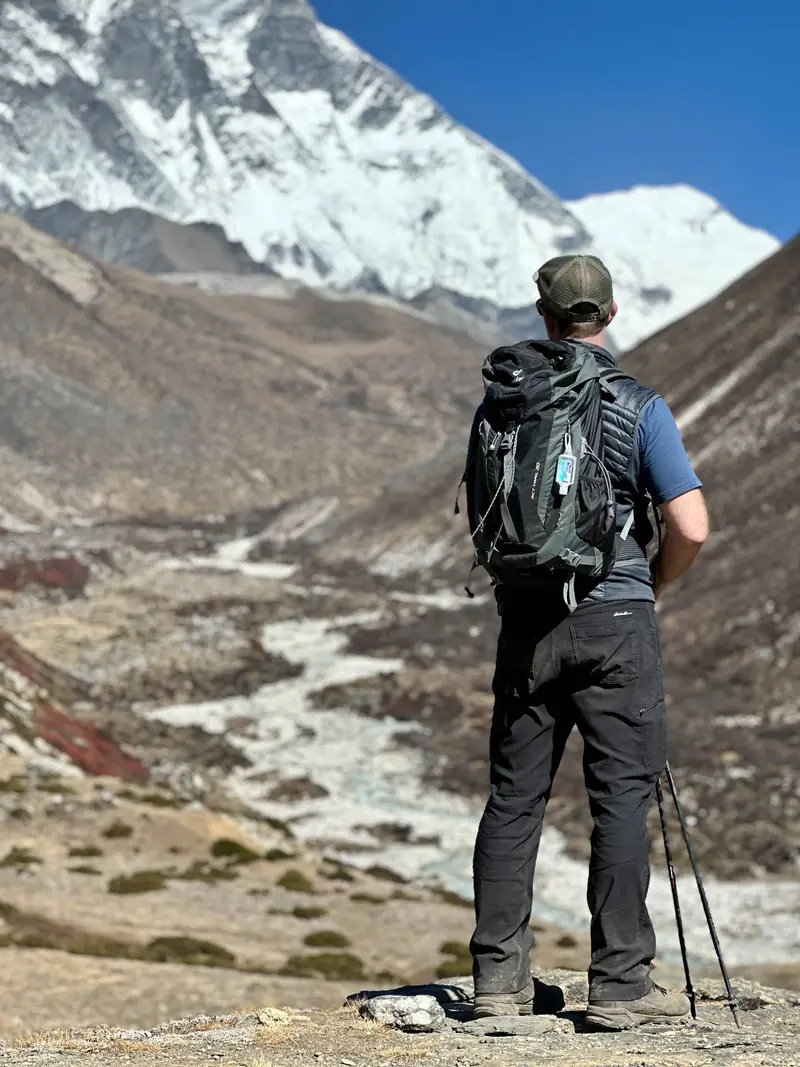
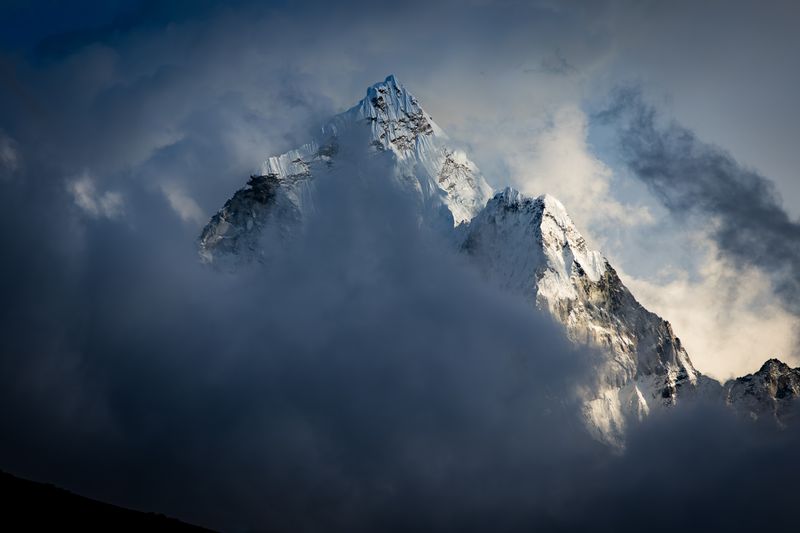
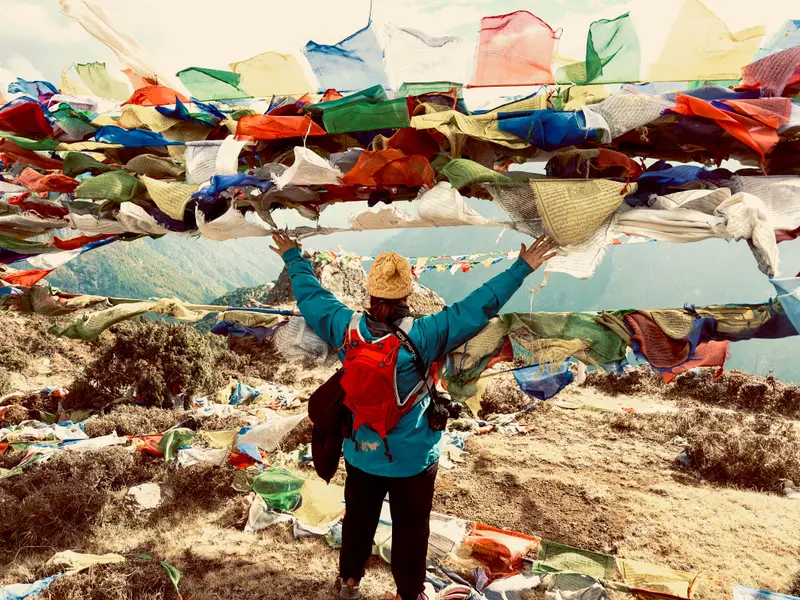
Again, just maybe don’t adventure in November.
****************************
Join me for a closer look at daily trekking HERE. I think I expressed discomfort and exhaustion almost as frequently as Kimby expressed her breast milk.
Or, there's lots of fun to be had with language barriers HERE and HERE!
And finally, you can see more Nepali toilets HERE, as well as other toilets from around the world!
